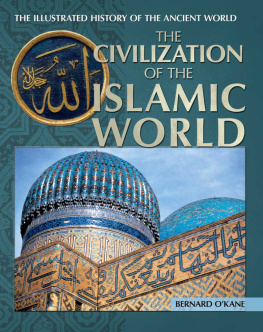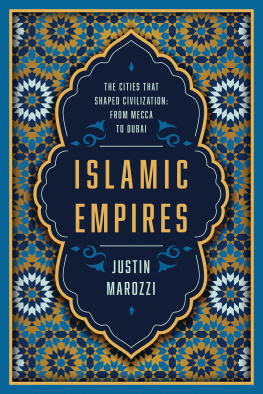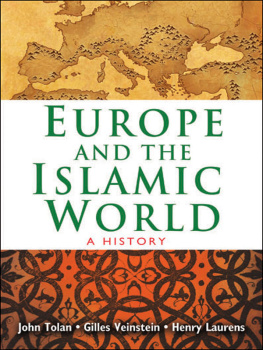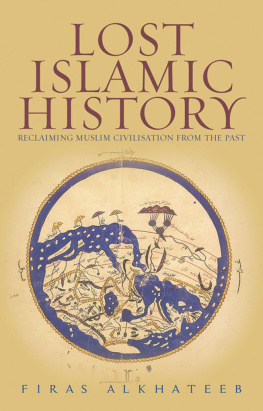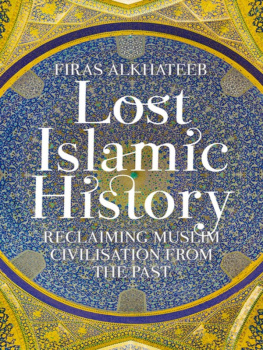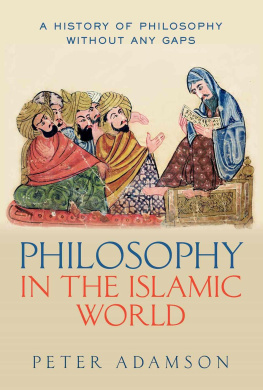A History of Islamic Societies, Third Edition
This third edition of Ira M. Lapiduss classic A History of Islamic Societies has been substantially revised to incorporate the new scholarship and insights of the last twenty-five years. Lapiduss history explores the beginnings and transformations of Islamic civilizations in the Middle East and details Islams worldwide diffusion to Africa; Spain; Turkey and the Balkans; Central, South, and Southeast Asia; and North America. The book has been updated to include historical developments in the first decade of the twenty-first century. The narrative is unified by its focus on the organization of primary communities, religious groups and states, and the institutions and cultures that define them.
The history is divided into four parts. The first part is a comprehensive account of pre-Islamic late antiquity; the beginnings of Islam; the early Islamic empires; and Islamic religious, artistic, legal, and intellectual cultures. Part II deals with the construction in the Middle East of Islamic religious communities and states to the fifteenth century. Part III includes the history to the nineteenth century of Islamic North Africa and Spain; the Ottoman, Safavid, and Mughal empires; and other Islamic societies in Asia and Africa, situating them within their global, political, and economic contexts. Part IV accounts for the impact of European commercial and imperial domination on Islamic societies and traces the development of the modern national state system and the simultaneous Islamic revival from the early nineteenth century to the present. Organized in narrative sections for the history of each major region, with innovative, analytic summary introductions and conclusions, this book is a unique endeavor. The informative and substantial update, balanced judgment, and clarity of presentation which readers have come to expect of this work ensure that it will remain a classic in the field.
IRA M. LAPIDUS is Professor Emeritus of History at the University of California, Berkeley. Throughout his long and illustrious career he has published extensively. His abiding interest has been the relationships among families, tribes, religious communities, cities, and states. This is exemplified in his current work and previous publications, including Muslim Cities in the Later Middle Ages (1967, 1984); Middle Eastern Cities (edited, 1969); Contemporary Islamic Movements in Historical Perspective (1983); Islam, Politics and Social Movements (co-edited with Edmund Burke, 1988); the two previous editions of A History of Islamic Societies (1988, 2002); and Islamic Societies to the Nineteenth Century: A Global History (2012).
A History of Islamic Societies
Third Edition
Ira M. Lapidus
University of California, Berkeley
32 Avenue of the Americas, New York, NY 10013-2473, USA
Cambridge University Press is part of the University of Cambridge.
It furthers the Universitys mission by disseminating knowledge in the pursuit of education, learning, and research at the highest international levels of excellence.
www.cambridge.org
Information on this title: www.cambridge.org/9780521732970
Cambridge University Press 1988 , 2002 , 2014
This publication is in copyright. Subject to statutory exception and to the provisions of relevant collective licensing agreements, no reproduction of any part may take place without the written permission of Cambridge University Press.
First edition published 1988
Second edition published 2002
Third edition pubished 2014
Printed in the United States of America
A catalog record for this publication is available from the British Library.
Library of Congress Cataloging in Publication Data
Lapidus, Ira M. (Ira Marvin)
A history of Islamic societies / Ira M. Lapidus, University of California, Berkeley. Third edition.
pages cm
Includes bibliographical references and index.
ISBN 978-0-521-51430-9 (hardback) ISBN 978-0-521-73297-0 (paperback)
1. Islamic countries History. 2. Islam History. I. Title.
DS35.63.L37 2014
909.09767dc23 2013028546
ISBN 978-0-521-51430-9 Hardback
ISBN 978-0-521-73297-0 Paperback
Cambridge University Press has no responsibility for the persistence or accuracy of URLs for external or third-party Internet Web sites referred to in this publication and does not guarantee that any content on such Web sites is, or will remain, accurate or appropriate.
Contents
Illustrations
Figures
Maps
Tables
Preface
Islam is the religion of peoples who inhabit the middle regions of the planet from the Atlantic shores of Africa to the South Pacific and from the steppes of Siberia to the remote islands of South Asia: Berbers, West Africans, Sudanese, Swahili-speaking East Africans, Middle Eastern Arabs, Turks, Iranians, Turkish and Persian peoples of Central Asia, Afghans, Pakistanis, many millions of Indians and Chinese, most of the peoples of Malaysia and Indonesia, and minorities in the Philippines some 1.5 billion people adhere to Islam. In ethnic background, language, customs, social and political organization, and forms of culture and technology, they represent innumerable variations of human experience. Yet Islam unites them. Although Islam is not often the totality of their lives, it permeates their self-conception, regulates their daily existence, provides the bonds of society, and fulfills the yearning for salvation. For all its diversity, Islam forges one of the great spiritual families of mankind.
This book is the history of how these multitudes have become Muslims and what Islam means to them. In this book we ask the following questions: What is Islam? What are its values? How did so many peoples, so different and dispersed, become Muslims? What does Islam contribute to their character, to their way of living, to the ordering of their communities, and to their aspirations and identity? What are the historical conditions that have given rise to Islamic religious and cultural values? What are the manifold ways in which it is understood and practiced? To answer these questions, we shall see how religious concepts about the nature of reality and the meaning of human experience, embedded at once in holy scripture and works of commentary and as thoughts and feelings in the minds and hearts of Muslim believers, have given shape to the lifestyles and institutions of Muslim peoples, and how reciprocally the political and social experiences of Muslim peoples have been given expression in the values and symbols of Islam. Our history of Islam is the history of a dialogue between religious symbols and everyday reality.
This book covers the history of the Islamic world from its beginnings in the seventh century to the present day. It is based upon the original A History of Islamic Societies , first published in 1988. A second edition, revising and bringing contemporary history up to date, was published in 2002.
Reviewing this work only a few years later, it is striking not only that recent events call for a still further updating but that as a result of scholarly research the past is changing too. The changes are generated in some instances by the discovery of new sources, but more commonly by new historical methods and theories that lead to both controversy and fresh insights.


